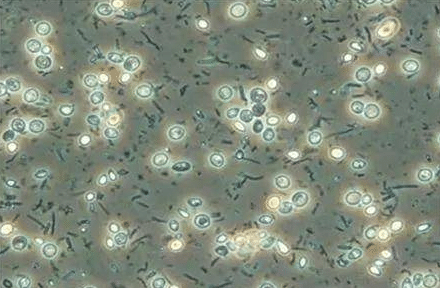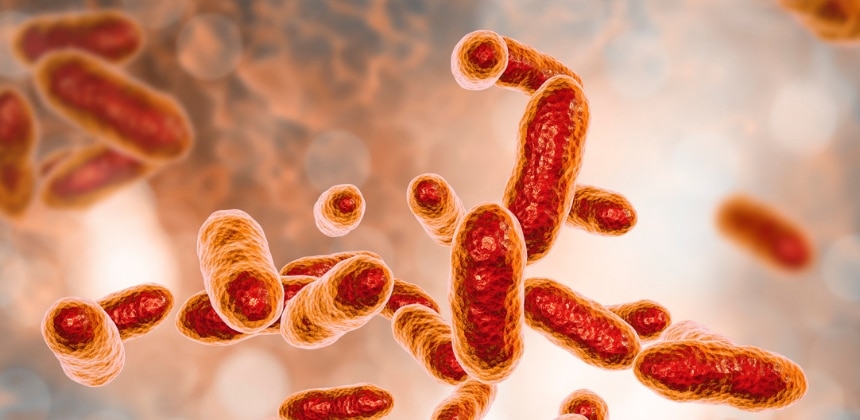Microbes help treat and purify wastewater in wastewater treatment, making it less harmful to the environment. Bacteria, algae and fungi feed on the organic matter in the wastewater and break it down. The bacteria gather together or flocculate, forming clumps that settle and separate from the wastewater liquid, and this settled material is called sludge. This type of biological wastewater treatment is also the most commonly used sanitation method in the world. Microorganisms in waste water will be discussed next.
Microorganisms commonly used in wastewater treatment
The vast majority of microorganisms in wastewater are bacteria. They are single-celled microbes and are classified according to their response to oxygen.
Aerobic bacteria
Aerobic bacteria are primarily used in aeration environments in new treatment plants. This type of bacteria uses the free oxygen in the water to degrade pollutants in the wastewater and then converts it into energy that can be used for growth and reproduction.

In order to make better use of this type of bacteria, it is necessary to add oxygen, a process also known as aeration(Usual use of roots blowers). This will ensure that the bacteria can do their job successfully and continue to grow and reproduce on their food source.
Anaerobic bacteria
Anaerobic bacteria are commonly used in wastewater treatment. The main role of these bacteria in wastewater treatment is to reduce the volume of sludge and to produce methane gas from it.

The advantage of such bacteria is that methane gas (biogas) can be used as an alternative energy source if cleaned and treated properly. This is a huge benefit considering the already high level of energy consumption for wastewater treatment.
Unlike aerobic bacteria, this type of bacteria is able to obtain more than enough oxygen from its food source and does not require the addition of oxygen to help do its job. The removal of phosphorus from wastewater is another benefit of using anaerobic microorganisms in wastewater treatment.
Parthenogenic bacteria
Parthenogenic microorganisms in wastewater treatment are bacteria that can vary between aerobic and anaerobic depending on the environment they are in. These bacteria usually prefer to be in an aerobic state.
5 stages of bacterial growth
The mixture of microorganisms and wastewater in an aeration tank is called the “mixture”. Bacteria typically go through five growth phases in the mix.
- During the lag phase, bacteria adapt to their environment and produce enzymes needed to digest nutrients. The bacteria use enzymes that work only under favorable conditions to break down the nutrients. If the enzymes do not work properly, the bacteria cannot survive.
- Influent wastewater contains large amounts of nutrients that bacteria can use for growth and energy. Bacteria begin to grow and multiply during the accelerated growth period. Growing bacteria move around in search of nutrients and multiply rapidly. They do not precipitate to form flocs.
- During the declining growth phase, nutrient levels begin to decline and bacteria compete for nutrients. When food levels are low, bacteria slow down to conserve energy and do not grow or multiply. Nutrients are used for energy and cell maintenance.
- Bacterial levels remain constant during the stationary phase. They form a thick layer of waste mucus outside the cell wall. This slime layer causes bacteria to clump together and form flocs.
- The number of bacteria decreases during the death phase.
How to improve the effectiveness of bacteria in wastewater treatment?
| Microbial Process | Pollutant Removal Efficiency |
| Nitrification (Nitrosomonas, Nitrobacter) | Ammonia Removal: 85-95% |
| Denitrification (Pseudomonas) | Nitrate Removal: 80-90% |
| Anaerobic Digestion (Methanogens) | Organic Matter Reduction: 70-85% |
| EBPR (Polyphosphate Accumulating Organisms) | Phosphorus Removal: 60-80% |
Efficiency of Microbes in Wastewater Treatment
One effective approach is to increase the efficiency of wastewater treatment by increasing the presence of beneficial bacteria. Therefore, the following equipment assists in the rapid adsorption of bacteria in the environment.
- Activated slurries
- Lagoons and ponds
- Biofilters
- Fine filters
- Rotating biological contactors
Summary
Many industrial and municipal wastewater treatment plants use bacteria and other microorganisms to help purify wastewater. This is a very effective biological treatment process. In fact, the process of wastewater treatment does not have to be a stand-alone effort. A comprehensive water treatment solution is available to help better treat water and wastewater.
KUOSI offers wastewater treatment equipment and industry solutions. For example, screw presses, plate and frame filter presses, dissolved air flotation systems, chemical dosing systems, etc. Feel free to contact us for equipment quotations or consulting solutions.
